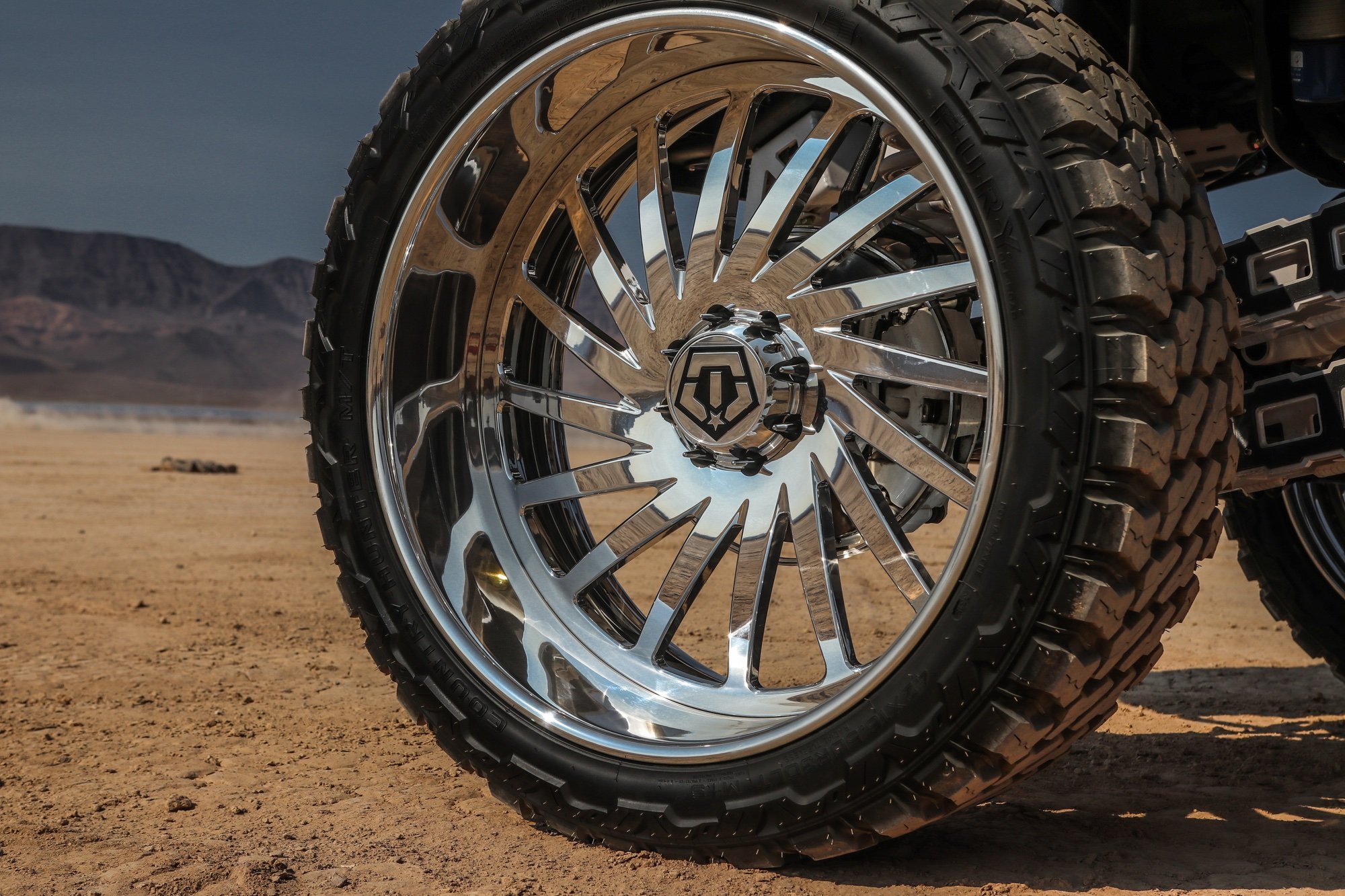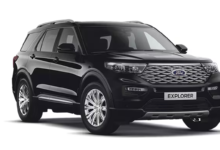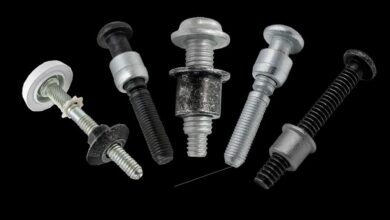
How to Choose the Best Tires for Your Vehicle
Despite the advancement in car tire technology, the tread life is finite and will differ from one car to another. Tread life span also varies by driving aggressiveness, road type, weather season, and tire types. Some common types of tires include ultra-high-performing, all-season, and winter tires.
After purchasing your car, you will likely find yourself changing the tires a few times throughout the car’s lifespan. Unfortunately, even the new tires won’t last you forever. As a result, it is recommended to switch to a used tire from a nearby location so that you can get them replaced when required. With responsible driving and proper maintenance, you can quickly maximize the mileage of a set of tires and help pinpoint when you need tire replacement. But with responsible driving and proper maintenance, you can quickly maximize the mileage of a set of tires and help pinpoint when you need tire replacement.
If you’re in the market for new tires, you will want to purchase the best quality tires to last you as long as possible. Below is a guide to help you choose the best tires for your car:
Table of Contents
Inspect Your Old Tires
Buying new tires can be a daunting and stressful process. However, vehicle manufacturers recommend that all car tires be changed at least once every six years, regardless of whether they are showing signs of wear and tear or not. Before rushing to the market for a set of new tires, check your car manufacturer’s manual for suggestions.
If you feel that it’s time to swap out your tires for brand new ones, start by taking your car to a mechanic for an inspection. The mechanic will carefully inspect your tires for visible and subtle signs of wear and tear. You should also conduct regular inspections of your tires before driving your car each morning.
During the inspection, the following are things to look for:
Vibrations
Do your vehicle’s tires vibrate noticeably when driving? This could indicate a significant issue with the tire that could turn into a bigger problem if not monitored. To check for vibrations, ask a friend to drive your car while you stand on the sidelines to determine if there are any vibrations.
Sidewall Fissures and Cracks
Check your tire’s sidewalls for any signs of cuts, cracks, holes, or even deformations. If you notice any grooves, the tire could be having an issue. Take the car to your mechanic to determine if the affected tire is on the verge of leaking.
Tread Depth
To check the tire’s tread depth, place a penny upside down in the grooves or treads of the tire. If Lincoln’s head on the penny is entirely visible, you’re probably dealing with worn-out tires. This means you need immediate tire replacement.
Blisters and Bulges
Any noticeable bulging or blisters on the tire is bad news. It’s a clear indication that the tire is worn out and the outer surface is weaker. Ensure you take your car to a trusted mechanic as soon as you notice any blisters or bulges on the surface.
Determine Your Car’s Tire Size
If your car needs new tires, you should do your research and ensure you purchase the right size and type, specially designed for your car model. Mixing different tire sizes, brands, and types could be dangerous and cause damage to the car.
When shopping for tires, you will likely see some written numbers and words on their sidewalls. These numbers and words relay the following information to buyers:
The Tire Specs
Tire specs describe the tire’s size, speed rating, and construction. The speed rating is the approximated speed the tire can safely maintain for the car over a period of time. The higher the speed rating, the easier it is to handle and control your car when driving at high speeds.
Speed ratings are rated from A to Y. A is the lowest speed rating, while Y is the highest. Keep in mind that the higher the speed rating, the shorter the tread life. Consult your vehicle’s manufacturer or mechanic for the ideal speed-rated tires for your car.
Uniform Tire Quality Grading (UTQG)
This tire testing method is specially designed to determine and grade a tire’s temperature, traction, and tread wear. The UTQG code shows three characteristics based on the tests conducted by the tire manufacturer.
The treadwear rating is a three-digit code in which 100 stands for normal wear, while 200 is twice as much wear as 100. This is often an estimation based on the manufacturer’s tests.
On the other hand, tire traction is often evaluated in letters. You may notice double-digit letters such as AA or single letters like B, A, and C. Traction is often assessed by how well the tires perform when stopped on wet concrete and asphalt floors. The manufacturers measure the coefficient in g-force.
Department of Transportation Safety Code
Every good quality tire has the Department of Transportation Safety Code. This code verifies that the tire company meets U.S. safety standards and that it’s safe for your car. The code is followed by the tire’s identification number and additional information about the date and place of tire manufacture.
Icons
Icons feature your tire’s exceptional qualities and unique benefits. For instance, if your tire has an icon written “M+S,” it means the tire meets the Rubber Manufacturers Association standards for snow and mud.
Choose the Right Type of Tire
Most people find the tire buying process a nightmare because of the numerous types of tires on the market. Fortunately, reputable tire manufacturers such as OZZYTYRES classify them based on weather conditions, the type of road you’re driving on, and your vehicle model.
Now that you understand a little more about tires, it’s time to dive into the types of tires best suited for your car. These include:
All Season Tires
All-season tires are the most common on the market. They come in sizes ranging from 14 to 18 inches and provide drivers with a high level of all-year-round comfort and grip when driving. They also have a very long lifespan and can go for 40,000–100,000 miles before you change them.
All-season tires often come with a speed rating of S (112 mph) to T (118 mph). They are ideal for minivans, standard cars, and older vehicles. They are also great for driving in areas where the temperature does not drop below the freezing point.
Performance All-Season Tires
These tires often come with better braking and handling than all-season tires. They come in a wide-ranging size, varying from 15-20″. Performance all-season tires have speed ratings of between H-130mph and V-149mph, with a higher mileage of 40,000 to 80,000.
Ultra-High Performance (UHP) Tires
All-season tires like the UHP can also be used during the summer. The first type of UHP tires gives your car dry and wet traction, making them better-performing tires during snowy weather conditions. The second type has an exceptional grip on dry and wet surfaces, with no grip on ice and snow surfaces.
Unfortunately, ultra-high performance tires offer harsh rides and wear very fast. Their speed ratings are often Y- 186mph, ZR-over 149mph, and W-168mph. They often come in standard sizes ranging from 17–22 inches, and their mileage is 30,000 to 60,000.
All-Terrain Truck Tires
These tires are designed for heavy-duty trucks and machine applications. If your vehicle is frequently driven with high loads, these are the best types of tires to purchase. The tires are great for both off-road drives and paved tarmac roads. They also provide enough traction on all road surfaces, including snowy and ice-covered ones.
Snow or Winter Tires
Snow or winter tires provide your car with excellent grip, making it easier to drive, take a corner, and break on icy and snowy surfaces. The rubber used to create these tires is quite pliable and can operate even in freezing temperatures. However, it will break much slower on a clean road and wear out quickly.
Performance Winter and Snow Tires
Performance winter and snow tires come in four different sizes and fit cars that use ultra-high performance tires during the other seasons. They offer a better grip on snowy and icy surfaces and come with speed ratings starting with H (139mph). Performance winter and snow tires are similar to other winter tires and have no stable mileage.
Check The Tire’s Warranty
There are two types of warranties offered by tire manufacturers today. These include tread warranty and defect protection. Trustworthy and reputable world-class tire manufacturers often offer their clients both types of warranty.
When buying tires, ensure you check the type of warranty they offer. In most cases, a manufacturer that offers both types of warranties guarantees that your tread will last you a few years before it starts wearing down.
It’s also advisable to think critically before purchasing a tire warranty. Most manufacturers often provide a warranty with limited mileage, and some tires often wear out faster than promised. If this is the case, you will likely get a replacement set of tires.
However, most manufacturers will conduct thorough inspections of the affected tire to ensure you have been taking good care of it. They will check whether you rotate your tires every 5,000 to 7,000 miles and whether you keep the tires well inflated at all times. Hence, it’s not always guaranteed to get a replacement.
Consider Your Wheels
When shopping for new tires, most people prefer customizing their vehicles and purchasing a new set of rims. Talk to your mechanic to check whether your current set of wheels is intact. If they are damaged, you may want to purchase a new set of wheels together with the tires.
When shopping for rims, make sure you consider more than their appearance and aesthetics. Try to match the wheel size to the original manufacturer’s wheels. While bigger wheels and rims might look great on your car, remember that the manufacturer knows the best wheel size for your car.
There is some complicated mathematics that goes into ensuring your wheels and tires match the vehicle. The bigger the wheel, the lower the aspect ratio of the tire you will buy. If you want your car to handle turning and braking properly, you need to ensure the outside diameter of your tires remains the same as the original wheels on your car.
If you install bigger wheels than recommended, you will have shorter sidewalls. The tire’s sidewall is one of the most important parts during vehicle handling. It’s also vital for reducing noise and maximizing comfort.
A shorter tire sidewall means the car won’t be able to fully flex when you’re turning. While this is great for sporty handling, your car will not be able to absorb pavement irregularities and bumps. Therefore, the bigger the wheel, the noisier and bumpier the ride will be.
Always Purchase a Full Matching Tire Set
When replacing the car’s wheels and tires, most car owners are tempted to cut corners to save money. This could mean purchasing second-hand tires from different individuals. Some vehicle owners only replace the most worn-out tires and leave the rest.
Unfortunately, today’s vehicle suspension technology is designed to work perfectly with a matching set of tires from the same manufacturer. It’s advisable to replace all four tires at the same time. This helps you easily maintain your tires and prevent any suspension problems.
But if there are any underlying issues with your suspension, make sure the problem is fixed by a reputable mechanic before installing the new tires. If you fail to do this, you might be dealing with a more significant problem in the future.
Are You Ready to Purchase the Best Tires for Your Car Today?
Shopping for new tires can be a daunting experience, especially if you don’t know what you’re looking for. You will come across a wide variety of tire brands, sizes, and models to choose from; hence, it’s very easy to be confused.
Before buying new tires for your car, you need to determine your needs, get a mechanic to inspect your vehicle, and do some research about the different types of tires on the market. All these factors help you determine the best tires for your car.
Did you enjoy this article? Check out other posts on our site for more informative tips.








